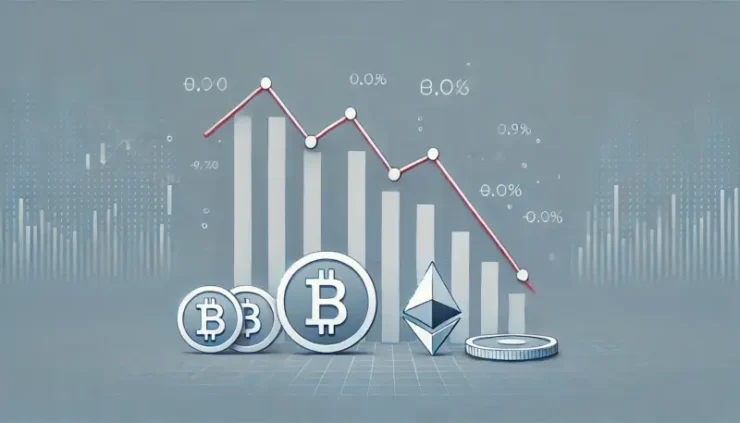The cryptocurrency market has suffered a staggering loss, shedding over $1 trillion in market capitalization since its December peak of $3.72 trillion. As of March 10, the total crypto market cap stands at $2.7 trillion, marking a steep decline fueled by macroeconomic concerns and investor uncertainty over President Donald Trump’s policies. Bitcoin ($BTC), the industry’s flagship asset, has plummeted from a high of $109,241 in January to $83,000, erasing gains linked to Trump’s early pro-crypto stance.
The losses extend beyond Bitcoin. Ethereum ($ETH), Solana ($SOL), and other major altcoins have dropped more than 20%, reflecting widespread investor unease. Analysts attribute the downturn to a mix of profit-taking and doubts about Trump’s execution of his crypto policy. His administration’s focus on aggressive trade tariffs—25% on Canada and Mexico and 10% on China—has further rattled the market.
Trump’s Bitcoin Reserve Fails to Bolster Prices
Despite Trump’s announcement of a strategic Bitcoin reserve, the market failed to respond positively. On March 6, Trump signed an executive order creating the reserve, composed of seized assets the U.S. government already owns. Investors had anticipated an aggressive purchase plan, but the absence of new acquisitions disappointed traders. Bitcoin briefly dropped 5% on the news before stabilizing at around $87,000.
Rachel Lin, CEO and co-founder of SynFutures, noted the lack of new demand: “Although the price has partially recovered, the lack of new demand and uncertainty about future government actions are preventing a significant rally.” Treasury Secretary Scott Bessent echoed this sentiment, stating that the government must first halt Bitcoin sales before considering accumulation plans.
David Sacks, White House crypto and AI czar, clarified that the reserve would include only Bitcoin seized from law enforcement actions and would not cost taxpayers. Arkham data estimates that the U.S. government holds 198,000 bitcoins worth approximately $17 billion. Other assets, such as Ethereum and Solana, remain largely unaccounted for in the reserve.
Tariff Fears Weigh Heavily on Crypto
The broader economic uncertainty stemming from Trump’s tariffs has compounded the sell-off. On February 4, Bitcoin’s price tumbled from $105,000 to $92,000 after Trump announced sweeping tariffs on Canada, Mexico, and China. While the market briefly recovered after he paused some tariffs, the ongoing trade tensions have continued to weigh on investor sentiment.
Garrick Hileman, an independent cryptocurrency analyst, highlighted the disproportionate impact on altcoins, including Trump’s own meme coin, which has plummeted 75% from its peak. Meme coins, known for their volatility, have suffered extreme losses, with First Lady Melania Trump’s token down nearly 90% from its all-time high.
Trump’s stance on digital assets has shifted considerably from his earlier skepticism. He has promised to position the U.S. as the global leader in crypto, appointing pro-crypto officials to key positions. However, market confidence remains fragile amid economic instability. JPMorgan analysts do not foresee a major recovery in the near term, citing broader inflation concerns and waning demand.
Market Awaits Further Policy Clarity
Bitcoin briefly reclaimed the $90,000 level earlier last week but has since dipped below it. Analysts warn that without sustained buying pressure, the asset could retreat toward $70,000. TD Cowen’s Jaret Seiberg noted that while the government’s decision to hold onto seized Bitcoin is a positive step, it falls short of the aggressive reserve strategy that some investors had hoped for.
Trump’s recently concluded White House Crypto Summit appears to have had little impact on investor confidence. Treasury now has 60 days to assess whether additional legislation is needed to operationalize the Bitcoin reserve strategy.





